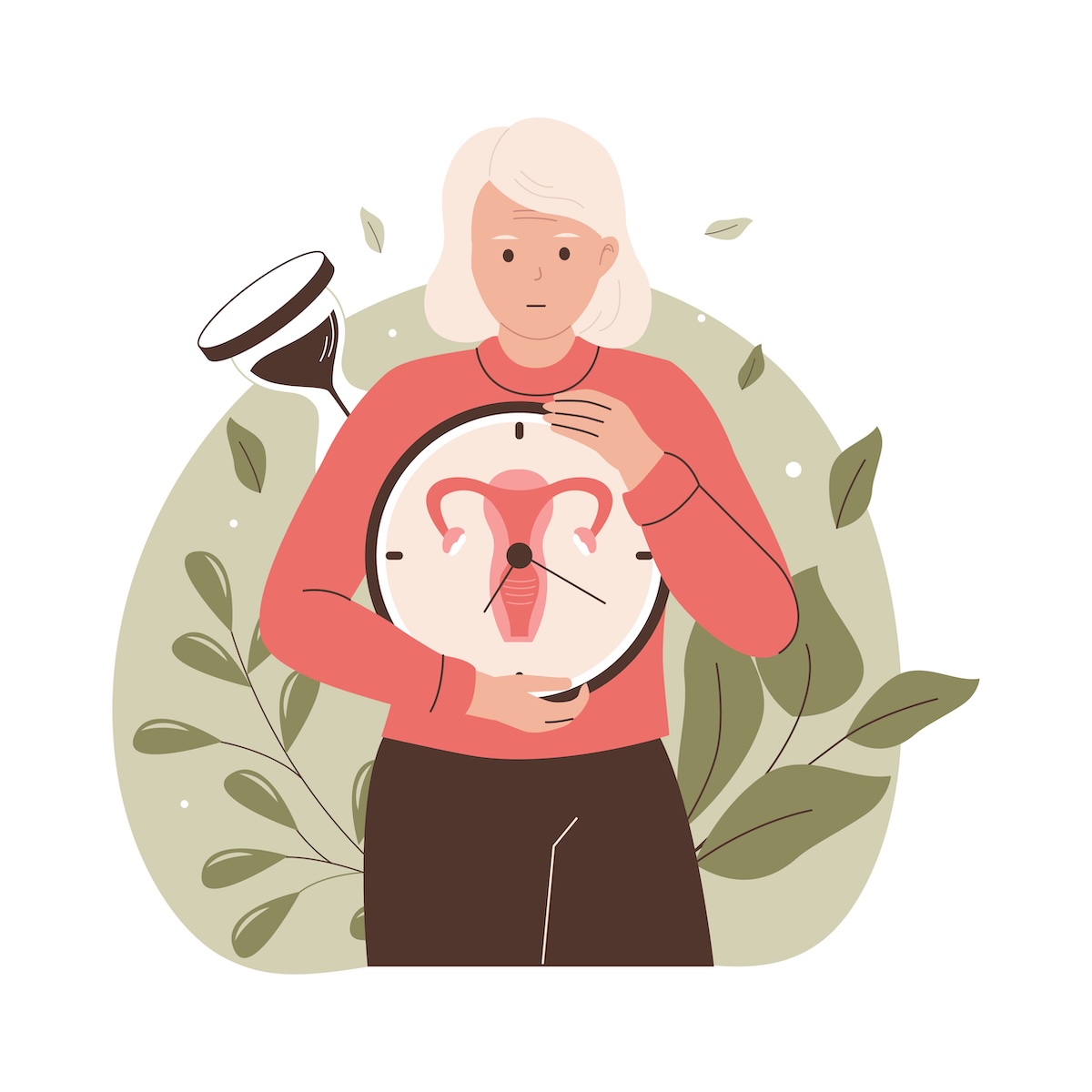Menopause is a natural phase in a woman’s life that marks the end of her reproductive years. It usually happens between the ages of 45 and 55, though it can occur earlier or later. Menopause isn’t a sudden change—it’s a gradual process that begins with shifts in hormone levels and ends with the complete stop of menstrual periods.

Many women have questions about what menopause really is, what symptoms to expect, and how to manage them. While this life stage can bring physical and emotional changes, it’s not a disease. It’s a normal transition, and with the right information and care, women can move through it with confidence and comfort.
This article will walk you through what menopause is, why it happens, the types and causes, common symptoms, how it’s diagnosed, and the treatment options that can help you feel your best.
What Is Menopause?
Menopause officially begins when a woman hasn’t had a period for 12 consecutive months. Before that point, she goes through a phase called perimenopause, which can last several years. During this time, hormone levels—especially estrogen and progesterone—fluctuate and begin to decline.
These hormonal changes can affect the menstrual cycle, causing periods to become irregular, heavier, lighter, or closer together. Eventually, the ovaries stop releasing eggs, and periods stop completely. That’s when menopause is said to have occurred.
After menopause, a woman enters postmenopause, which continues for the rest of her life. During this stage, symptoms like hot flashes may become less intense, but the body continues to adjust to lower hormone levels.
What Causes It and What Are the Types?
The main cause of menopause is the natural aging process. As women get older, their ovaries gradually produce less estrogen and progesterone—two hormones involved in menstruation and fertility. Once hormone levels fall low enough, the menstrual cycle stops.
There are also a few other ways menopause can happen, some of which are not related to aging:
Surgical menopause occurs when both ovaries are removed, often during a hysterectomy. Because the change is sudden, symptoms may feel more intense.
Premature menopause happens before age 40 and may be caused by genetics, autoimmune diseases, or certain medical treatments.
Induced menopause can result from chemotherapy, radiation, or hormone therapy that damages the ovaries.
Each type of menopause has the same end result—lower hormone levels and the end of menstrual periods—but the way it begins and how symptoms appear can differ from woman to woman.
Recognizing the Symptoms
Menopause can bring a wide range of symptoms, and not all women experience them the same way. Some have very few symptoms, while others find them disruptive. Many of these changes are caused by shifting hormone levels, especially declining estrogen.
The most common symptoms include:
-
Hot flashes or sudden feelings of warmth, often with sweating
-
Night sweats that can disturb sleep
-
Irregular periods or skipped cycles during perimenopause
-
Vaginal dryness, discomfort during sex, or itching
-
Mood swings, irritability, or feelings of anxiety
-
Trouble sleeping or waking up too early
-
Weight gain, especially around the belly
-
Memory problems or difficulty focusing
-
Thinning hair or dry skin
-
Loss of bone density, increasing the risk of osteoporosis
Some women also report feeling tired or less interested in things they used to enjoy. It’s important to remember that these symptoms are temporary for many people, and there are ways to manage them effectively.
How Menopause Is Diagnosed
Menopause is usually diagnosed based on symptoms and age. If a woman is over 45 and having irregular periods, hot flashes, or other typical symptoms, doctors often don’t need to do any special tests to confirm menopause.
However, if symptoms appear earlier than expected or if a woman has had surgery or health problems that affect the ovaries, doctors may do blood tests to check hormone levels. A common test looks at follicle-stimulating hormone (FSH), which rises as the ovaries slow down. Estrogen levels may also be measured, as they tend to drop during menopause.
Other tests might be used to rule out other conditions that can mimic menopause symptoms, like thyroid problems or certain infections.
Doctors will also look at medical history, family history, and menstrual patterns to get a full picture of what’s going on.
Treatment and Lifestyle Options
There is no one-size-fits-all treatment for menopause because every woman’s experience is different. The goal of treatment is to ease symptoms and support long-term health.
For women with moderate to severe symptoms, hormone replacement therapy (HRT) is often considered. This involves taking estrogen alone or with progesterone to replace the hormones the body no longer makes. HRT can reduce hot flashes, night sweats, and vaginal dryness, and also helps prevent bone loss. However, it’s not for everyone, and doctors will weigh the risks and benefits before recommending it.
Non-hormonal medications like certain antidepressants or seizure drugs can also help with hot flashes and mood symptoms. Vaginal estrogen creams, lubricants, or moisturizers can help ease dryness and discomfort during sex.
Lifestyle changes can make a big difference, especially for women who prefer not to use medication. These include:
-
Dressing in layers and using fans to stay cool during hot flashes
-
Avoiding spicy foods, alcohol, or caffeine, which can trigger symptoms
-
Staying physically active to help with mood, weight, and bone health
-
Eating a balanced diet with plenty of calcium and vitamin D
-
Practicing relaxation techniques like yoga, meditation, or deep breathing
Support from others can also be helpful. Talking with friends who are going through menopause or joining a support group can remind women that they are not alone.
